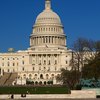Over 20 million people visit Washington, D.C., every year. Most of them between March and June, with a break in visitation during the notoriously hot and humid summer months of July and August. Travelers return to the city briefly in late September through October, before the city goes quiet in winter when visits drop to approximately half what other months see. Each season introduces different adventures in the Capital City. Spring is synonymous with the National Cherry Blossom Festival. In summer, hundreds of thousands celebrate the Fourth of July with a massive fireworks display on the National Mall. Fall delights with the spectacle of the 17th Street High Heel Race. Winter’s holiday festivals see the city decked out in strings of brightly colored lights and the National Christmas Tree Lighting Ceremony. No matter the season, be prepared for temperature swings – as the natives say, “If you don’t like the weather, just wait a day.”
Crisp, Cool and Calm Fall
Fall introduces a much-needed break from the heat, humidity and crowds of the summer months. Visitors in September can still experience summer-like heat, but average temperatures are usually in the 70s. Temperatures in October and November drop to the 60s and 50s. Crowds begin to thin when families head back to their hometowns as children return to school and the lush scenery begins to don fall colors. In autumn, Washington hosts the Library of Congress’s National Book Festival and concerts at the National Gallery of Art. Military vets are honored with ceremonies around the city’s monuments for Veterans Day and a wreath-laying ceremony at the Tomb of the Unknowns at Arlington National Cemetery.
Winter in the Capital City
Winter in the nation’s capital can be unpredictable, with sub-freezing temperatures and even occasional snow, sleet and freezing rain. Travelers who brave the weather are rewarded with hot apple cider and the warmth of the yule log at the National Christmas Tree. Other winter events worth bundling up for include Zoolights at the National Zoo and exploring the unique ice skating rinks around the city. Skate at Georgetown’s Washington Harbor, a neighborhood older than the city itself, or atop the Watergate Hotel. Since winter is traditionally a low season for travel to the Capital, visitors are more likely to find deals on accommodations and travel. The monuments on the National Mall are open 24/7, so consider a nighttime walk through the snow when they are cast in white light and the crowds are small.
Spring’s Cherry Blossoms
Cherry blossoms spring to life in March as the district shakes off the chill of winter. Early spring remains relatively chilly, and there’s always a risk of a late frost damaging the delicate blossoms. Over 1.5 million tourists flock to the two-week-long National Cherry Blossom Festival. April’s White House Easter Egg Roll may see sunny skies or soaking rains. If you plan to attend, you’ll need tickets, available through a lottery system. Temperatures climb into the 70s by May, and class trips and vacationers begin to swarm the city in late May and June to get a jump on the summer heat and crowds.
Sweltering Summer Heat
Museums along the National Mall blast air conditioning all summer long, and vendors line the streets offering ice cold water and flimsy ponchos for afternoon thunderstorms. Summer months in the District of Columbia are unforgiving for travelers who are unprepared. While average temperatures are in the 80s and 90s, it’s the sweltering humidity, especially in August, that makes the city's weather so unpleasant. Aside from museum going, summer activities in Washington include catching a baseball game at Nationals Park, celebrating independent performing artists with the Capital Fringe Festival and exploring the food truck festival of Truckeroo.
References
- DC Press: Washington, DC Visitor Research
- U.S. Climate Data: District of Columbia
- Library of Congress: National Book Festival
- National Gallery of Art: Concerts
- Smithsonian's National Zoo: Zoolights
- The Washington Harbor: Ice Skating
- Georgetown: Georgetown History
- The Watergate Hotel: Rooftop Skating
- National Cherry Blossom Festival: Home Page
- The White House: Easter Egg Roll
- MLB: Nationals Park
- Capital Fringe: Upcoming Events
- The Bullpen: Truckeroo
Resources
Writer Bio
Katerina Fuller, a native of Washington, DC, is a world traveler and creative chronicler of relatable travel guidance. Fuller spent a year exploring the off-the-beaten-path reaches of the US, often driving through and camping in remote areas of the Lower 48. Fuller's extensive experience in writing simple how-to articles on complex topics as well as her personal experiences traveling the US, the Caribbean, Europe, and Africa give her travel columns a uniquely accessible angle. More of Fuller's work can be found on her portfolio bebravetraveler.com





